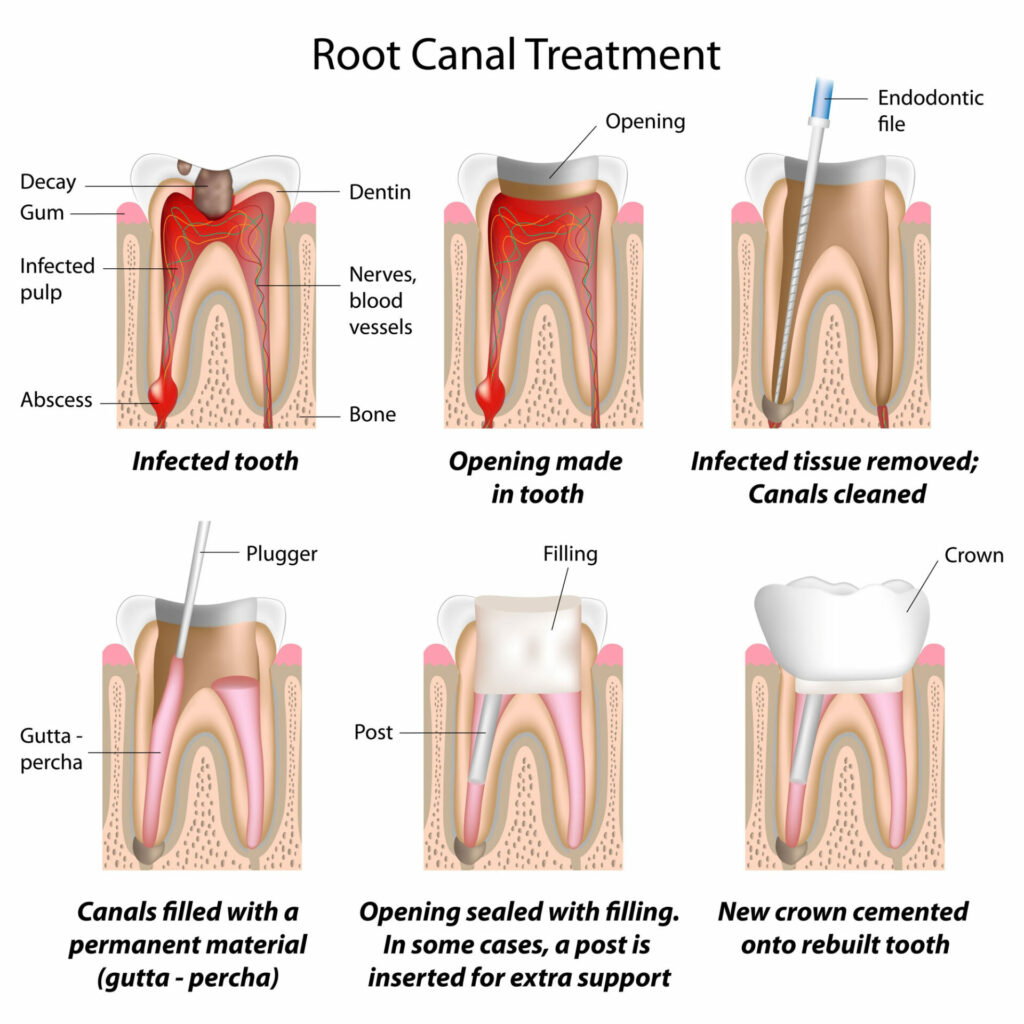Root Canal Therapy
Read the page below to learn about what a root canal is, when it is needed, and what happens during the operation. Contact us to stay informed and find out if it is the correct treatment for you.
What Is A Root Canal?
Root canal treatment is a common dental procedure that is intended to eliminate bacteria from the root canal system and to prevent reinfection of the tooth. This allows the natural tooth to be preserved rather than having to extract the tooth. During the procedure, the inflamed or infected pulp is removed, followed by disinfection of the tooth and then filling the space with a rubber-like material that seals the tooth from reinfection. The dentist then restores the tooth with a filling or crown.
When Is Root Canal Treatment Needed?
Each tooth consists of an inner portion of soft tissue that contains blood vessels and nerves. This pulp can become inflamed or infected, requiring root canal therapy in order to save it. This inflammation or infection most often occurs if your tooth has been severely damaged from a cracked or broken tooth, a deep cavity or filling, repeated dental work or other serious injury to your tooth. These conditions allow bacteria to enter the pulp and cause infection or inflammation. As the bacteria multiplies inside the tooth, this can cause an infection or abscess at the end of a tooth’s root. Root canal therapy is often the best way to save your tooth. Sometimes there are no signs of needing a root canal, but more commonly signs and symptoms that indicate you may need a root canal are the following:
- sensitivity to hot or cold that persists for several seconds or more after the heat or cold has been removed.
- tenderness or pressure above the tooth when chewing or biting
- dull, throbbing ache that spontaneously appears
- swelling of the gums around the tooth, or swelling of the face or neck
- a tooth that has turned dark or gray
- persistent pimple-like lesion on the gums
What Happens During A Root Canal
Generally, a root canal can be completed in one to two visits. We start by using local anesthetic to make sure the tooth and tissue is numb. When we are sure you are comfortable and cannot feel anything, we place a flexible sheet of plastic over your tooth to ensure the tooth stays dry. The decay is then removed and a hole in the center of your tooth is made. Using instruments, or files, the inflamed or infected pulp tissue is removed, and the canal space is then disinfected. A rubber-like material, called gutta percha, is then placed to seal up the tooth. We then temporize the tooth so that at your next visit, it can be restored with a crown. Placing a crown is a necessary step to protect the tooth from fractures and reinfection into the root canal. Failure to crown a tooth after root canal therapy is the largest cause of failure. This is mainly because the tooth is now hollow and the tooth becomes brittle over time due to having no blood supply.

Why should I have a root canal?
Most people realize the importance of saving their natural teeth. Missing teeth have several disadvantages. Loss of a tooth leaves a gap in your smile and can cause troubles while eating and speaking. Furthermore, replacement of missing teeth with implants or bridges can cost substantially more and requires much more time. Patients must consider the advantages and disadvantages between extraction and root canal therapy before determining the best course of action. There are times when extraction of a tooth is necessary or the questionable prognosis doesn’t warrant the investment of a root canal, but most of the time root canal treatment is the best way of saving your tooth. Here at Intermountain Dental, Dr. Duke and his team will take the necessary time to ensure you understand all of your options and to help you make an informed decision.
